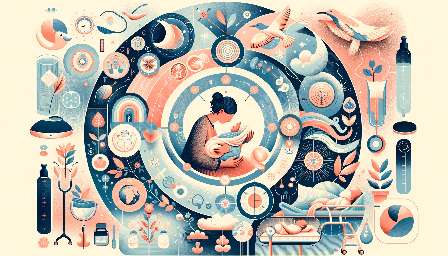Introduction
Understanding the potential reasons for a cesarean birth is essential for expectant parents and healthcare providers alike. Cesarean sections, also known as c-sections, are surgical deliveries that involve the baby being born through incisions made in the mother's abdomen and uterus. While natural vaginal birth is often the preferred method, there are numerous circumstances that may lead to the need for a cesarean birth. In this comprehensive guide, we will explore the factors and conditions that can necessitate a cesarean section, with a particular focus on how it ties into the stages of labor and childbirth.
Reasons for Cesarean Birth
There are several potential reasons why a healthcare provider may recommend a cesarean birth. It's important to note that these reasons can vary from case to case, and the decision for a cesarean section is typically made based on the specific circumstances of each labor and delivery. Some common factors that may lead to a cesarean birth include:
- Prolonged Labor: If labor fails to progress adequately, particularly during the active phase, healthcare providers may opt for a cesarean section to ensure the safety of both the mother and the baby.
- Fetal Distress: When the baby shows signs of distress, such as an abnormal heart rate, a cesarean birth may be necessary to expedite delivery and minimize potential risks.
- Malpresentation: If the baby is not positioned head-down, or if there are other malpresentation issues, such as breech or transverse positioning, a cesarean birth may be recommended to avoid complications during delivery.
- Placental Issues: Conditions such as placenta previa or placental abruption, where the placenta is positioned unusually or detaches from the uterine wall, can necessitate a cesarean section to prevent excessive bleeding and protect the well-being of the mother and baby.
- Multiple Gestation: When a woman is carrying twins, triplets, or more, the healthcare provider may advise a cesarean birth to minimize the risks associated with delivering multiples.
- Previous Cesarean Birth: If a woman has undergone a cesarean section in the past, the risk of uterine rupture during a subsequent vaginal birth may prompt the recommendation for a repeat cesarean birth.
- Maternal Medical Conditions: Certain maternal health issues, such as hypertension, diabetes, or heart disease, may increase the likelihood of needing a cesarean section to ensure the safety of both the mother and the baby.
These are just a few examples of the factors that could lead to a cesarean birth. It's important to recognize that the decision for a cesarean section is typically made in the best interest of the mother and the baby, taking into account the specific circumstances and potential risks involved.
Stages of Labor and Cesarean Birth
Understanding how cesarean birth intersects with the stages of labor is crucial for expectant parents and healthcare professionals. The stages of labor consist of:
- First Stage: Early Labor
- First Stage: Active Labor
- First Stage: Transition
- Second Stage: Pushing and Birth
- Third Stage: Delivery of the Placenta
- Fourth Stage: Recovery
During the early and active stages of labor, the decision for a cesarean birth may be influenced by factors such as prolonged labor, fetal distress, or malpresentation. Healthcare providers closely monitor the progress of labor and assess the well-being of both the mother and the baby to determine the most appropriate course of action.
When it becomes evident that a cesarean section is necessary, the transition stage of labor may involve the preparation for the surgical procedure, including anesthesia administration and surgical team readiness. The second stage, which involves pushing and birth, would then take place in the operating room under the care of the surgical team.
After the baby is delivered through cesarean birth, the third stage involves the delivery of the placenta, which may occur naturally or be facilitated by the healthcare provider. The fourth stage entails the recovery period immediately following the cesarean section, during which the mother receives postoperative care and is monitored for any potential complications.
Cesarean Birth and Childbirth
When we consider cesarean birth in the context of childbirth as a whole, it's crucial to recognize that childbirth encompasses diverse experiences and outcomes. While vaginal birth is the preferred method for many women, cesarean birth provides a vital option for safely delivering babies in cases where vaginal birth may pose risks to the mother or the baby.
Childbirth, whether through vaginal delivery or cesarean section, marks the beginning of a new chapter in the lives of families. The process of childbirth involves not only the physical act of delivering a baby but also the emotional and psychological journey that expectant parents embark on as they welcome a new member into their family.
By understanding the possible reasons for a cesarean birth and how it aligns with the stages of labor and childbirth, individuals can gain a comprehensive understanding of the complexities and nuances involved in the delivery process. This knowledge empowers expectant parents to make informed decisions in collaboration with their healthcare providers, ensuring the best possible outcomes for both mother and baby.


